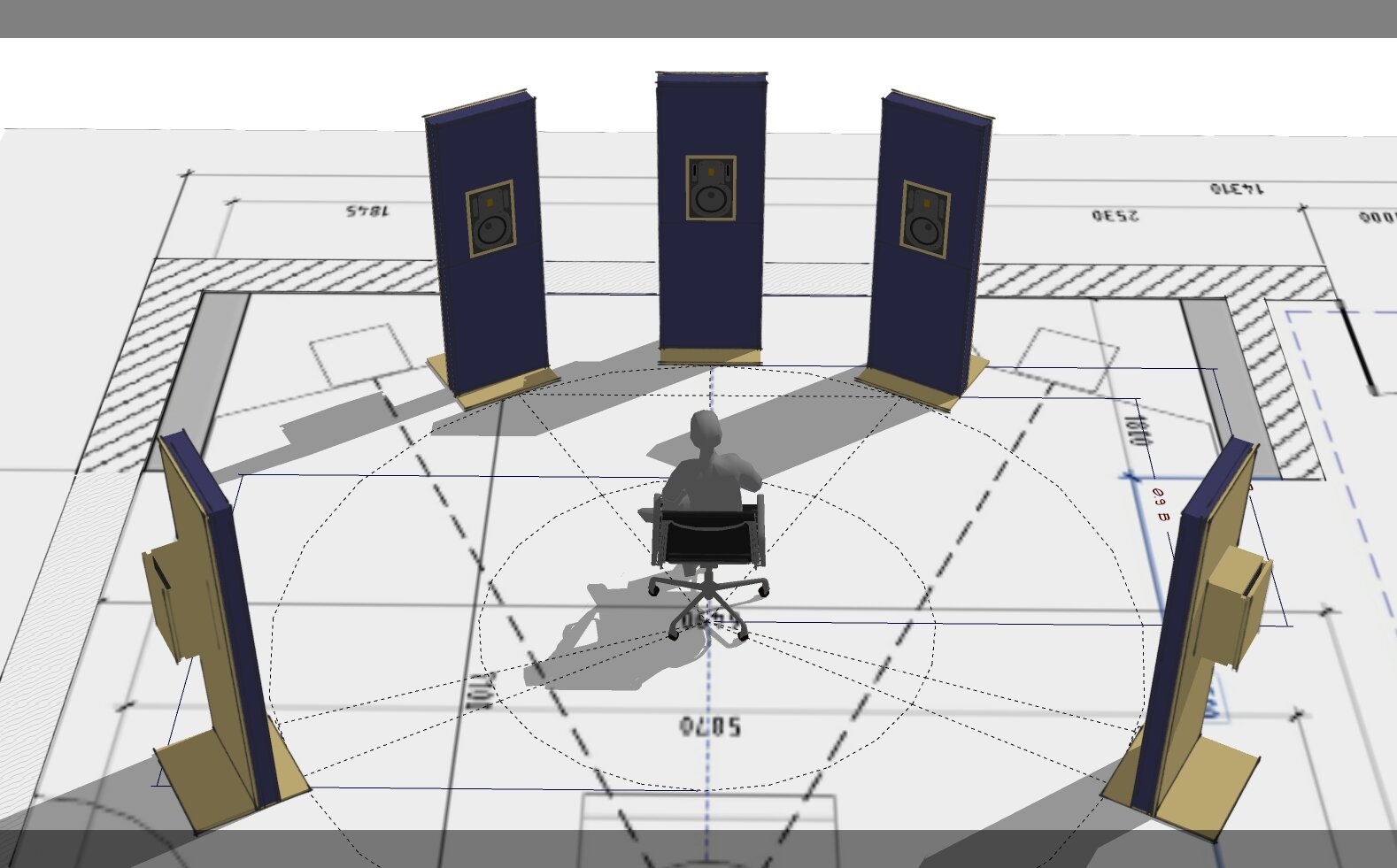-
Posts
2,297 -
Joined
-
Last visited
Everything posted by Glenn Stanton
-
i have the latest version and its there... however, if there is no content in the selected track(s), the option is grayed out.
-
are you stretching any audio? (vs MIDI instruments)? are you sure there are no tempo changes being set (perhaps in a template you made)? look at the tempo map to be sure. i know ive done things like change tempo with audio files without going through the steps to proper stretch the audio tracks.
-

Allow us to determine the block size in WASAPI Shared.
Glenn Stanton replied to Bruno de Souza Lino's topic in Feedback Loop
on my system with a Behringer UB-802 on USB 2, i'm getting a reading of 10ms @ 480 samples. have you run the wave profiler on driver settings tab? under audio sync and caching i believe you can make this adjustment which might help. -
the downside of modular choices - how many busses did you need? or tracks? i think over time you define what is the most likely combination of tracks and busses you typically use and make that your primary template. then create the other track templates for expanding your project. i have a single large "template" template which has my full set of tracks and busses, and when creating a new track template, i use that to add the new track, set up the effects, sends etc. and then export it. if i have existing busses that match up - the track is simply added and wired in. if the project doesn't have the associated buss(es), then they get added and the track is wired in... so my primary template has maybe half the total number of tracks and busses and i have another 30 or track templates for specific instrumentation and their associated busses. the main annoyance is the buss colors not being preserved and thus the track colors are not...
-

How to convert IRs wave files down from 96khz to 44khz?
Glenn Stanton replied to Cecelius2's topic in Cakewalk by BandLab
maybe an mp3 file is the only [surviving] copy of something (think old cassette tape ? ) and you need to do some edits - example - you get an mp3 from someone's mp3 recorder of an important meeting but want to run RX on it to clean it up - so converting to WAV first then running through a series of fixes (some may be destructive writes) - and then re-export as mp3. obviously not the same as buying things and getting them as mp3 when they should have been WAV (or other lossless format)... -
you could just create presets to reuse things. i have made about 50 custom presets which include sonitus and PC, waves and PC, slate and PC, etc variations of eq, compressor, effects, etc which i can readily load and tweak. this way if my template defaults are just right, i load up the waves or slate variations and tweak if necessary. saves a lot of clicks and time ? then like other presets you can select multiple tracks or busses and load them in one go (like you could with FX Bin)
-
i almost never use the track FX bin as most of the stuff i'm using is the in the PC modules. so i use the PC FX bin/chain for presets that include non-PC/VST/DX modules like compressors, effects, etc. then with a bunch of presets, it's easy to add them across tracks and busses. and tweak. plus my templates already have the bulk of PC modules per track and busses setup.
-

Join Facebook User Group (Unofficial)
Glenn Stanton replied to Windows-in-the-Mix's topic in Tutorials
coolio- 6 replies
-
- beginner
- professional
-
(and 2 more)
Tagged with:
-

Join Facebook User Group (Unofficial)
Glenn Stanton replied to Windows-in-the-Mix's topic in Tutorials
why not use the techniques forum here? many people are leaving facebook.- 6 replies
-
- beginner
- professional
-
(and 2 more)
Tagged with:
-
looking at the list it would appear that each of Mark's test where an increase of 10 is roughly an octave (20, 40, 80, 160, etc). but if you produced a finer granularity for your own as testing as Mark described, you could likely map to whatever range you wanted. it's likely different EQ types will have different slopes so you may want to test for each of the 4 EQ types.
-
sadly it's only for paid subscribers.
-
actually there are a number of features in CW which provide tempo changes to audio files - and depending on the content - can be effective. in some cases though, the stretching and slicing needed to change a tempo can produce undesired artifacts. so check out the options for modifying tempo. Cakewalk - Cakewalk Documentation - Changing tempos https://www.cakewalk.com/Documentation?product=Cakewalk&language=3&help=Tempo.06.html
-
does deleting the presets.db remove any custom presets?
-
the presets.db is a SQL lite file, so unless there is a rollback function (which the "restore" button sounds like) you'd have to reload that db file. depending on how you backup your system, you might be able to restore that file to its last known good config. another thought (if re-installing isn't an option) is to install it on anther system, bring up the preset you want, document it (photo etc) and configure and save it as the factory preset on your main system.
-
i have the AT 3035 but if i was looking for a mic under $100 (and assuming you haven't already bought the #1 universal mic the Shure SM-57 at about $100) the Audio Technica 2020 is an excellent choice.
-
so, the typing is really fast then? ?
-
what i do is add the image to a project file (which is my template also) then save it as a project file. next - rename the file to <templatename>.cwt. the image is now part of the template and as subsequent project saves from that template. move (or copy) that file into your project templates folder.
-

Midi keyboard plugged into Android phone
Glenn Stanton replied to Philip G Hunt's topic in Instruments & Effects
the adapter is key - i used a type-c to type-a "smart adapter" ('cause it also does hdmi and charging) and plugged an M-Audio Keystation 49 and voila! (e.g. https://smile.amazon.com/Adapter-Charging-Multiport-Projector-Monitor(Gray)/dp/B07R7PD8TR) it worked when you have the right programs - like the midi piano, caustic, and there are some midi "controller"/"converter" type out there as well, however, in trying a bunch of free ones, they did no controlling or converting ? i did this experiment to get my daughter set up with her phone and tablet. so it's mainly: 1) get the right adapter - a powered one is better because it will supply the keyboard power rather than draining the phone - if you're planning on being in the wilderness - perhaps a solar charger is in order ? 2) you'll have to play with different software products to see which ones work. there is not a lot of free ones that do a good job, and i didn't feel compelled to spend money on something that was really just trying to see if i could get it to work... -
i keep a printed cheat sheet of my buss/track color scheme (small squares with color, RGB#, name of buss). i only have about 30 busses so the groups of them are similar that if my overall template doesn't solve it, i can create a new custom version. although i tend to just use the main templates and trim out what i don't need rather than try to create new versions with track templates (and hopefully someday buss templates!)
-
yeah! then you get the best sound from your 8-bit crusher distortion analog-defect reproduction VSTs! ?
-

Why does Velocity not change the Volume below a certain threshold?
Glenn Stanton replied to Mintaka's question in Q&A
triangle or square wave setting on the synth oscillator(s). sine waves can be hard to hear so the triangle and square wave harmonics will likely be more noticable with lower volume levels... -
my first thought would be the power rectifier tube is fritzing, or the power supply caps are on the way out. doubtful it's the transformer. one option would be to swap out the four (4) tubes for a new set. if you'd don't have electronics repair skills - then take it to a proper shop for repair because changing out components can make things worse if not done correct - product choice and installation etc.




